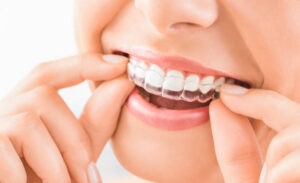If you want your smile to be truly confident and healthy, straight teeth are essential. Orthodontic treatments have evolved significantly, offering patients far more choices than ever before. While metal braces were long considered the standard, alternatives like Invisalign and other invisible braces have become popular options. If you’re considering orthodontic treatment in Bryn Mawr, you’re likely wondering: which is better — Invisalign or traditional braces?
This blog will compare clear aligners and traditional braces, highlight the advantages of each, and help you determine which option is best for achieving your ideal dental alignment.
What Are Braces?
Braces are the traditional form of orthodontic therapies that have been around for centuries to treat various dental problems. Using metal brackets, wires, and sometimes rubber bands, braces gradually move teeth into their intended position.
Braces are often the most effective solution for complex misalignment, overcrowding, or bite issues. However, because they are highly visible, many adults explore alternatives through adult orthodontics, seeking a more discreet way to straighten their teeth.
What Is Invisalign?
Invisalign is a new orthodontic treatment that employs a series of clear, custom-made aligners to slowly move the teeth into place. They are removable and nearly invisible, making them much less noticeable than traditional braces.
The main reason why patients in Bryn Mawr prefer Invisalign is because of the comfort and convenience it provides. The aligners are removable for eating, brushing, and flossing, which makes them simpler to clean than regular braces.
Clear Aligners vs. Braces: Major Differences
There are several factors to consider when comparing Invisalign with traditional braces:
1. Looks
Braces: Metal braces are highly visible, which can make many patients feel self-conscious.
Invisalign: The clear aligners are almost invisible to the naked eye. As a result, it is especially popular among teens and adults who want a discreet form of treatment.
2. Comfort
Braces: Wires and brackets can cause discomfort and may sometimes irritate the inside of the mouth, especially after adjustments.
Invisalign: Invisalign aligners are made of smooth plastic, which makes straightening your teeth a more comfortable experience.
3. Maintaining Oral Hygiene
Braces: Brushing and flossing are difficult with braces, and certain foods would need to be avoided.
Invisalign: Being removable, these aligners make it easy to keep your teeth clean and enjoy your favorite food.
4. Treatment Scope
Braces: Good for mild to extreme dental alignment problems, including complex bite problems.
Invisalign: We can still treat most cases with clear aligners, but some more extreme movements often require braces.
5. Convenience
Braces: Frequent visits to tighten wires are needed.
Invisalign: Less frequent visits, and aligners can be replaced at home based on the treatment plan.
Invisalign for Teens
Most people think that Invisalign is just for adults, but Invisalign for teenagers has proven to be a great choice. Teen patients enjoy the discreet model without giving up on great results. Aligners also have compliance indicators to verify good wear, giving parents confidence in the progress and success of the treatment.
Adult Orthodontics: Why Invisalign Stands Out
Adult citizens looking for orthodontics will experience a myriad of benefits with Invisalign. Its discreet fit makes it ideal for both one’s professional and social life, while its easy removability eases the process of daily oral hygiene. Many adults who have postponed orthodontic attention choose to go for Invisalign, as this option balances speed with convenience and aesthetics.





